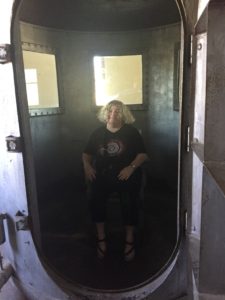A very quick post this week because once again I’m traveling.
My older daughter is binge-watching Dexter right now, and she asked me why Dexter works for the Miami Metro Police. Why the metro, she wanted to know.
Actually, the city of Miami calls its police the Miami Police Department, while the sheriff’s department for that region used to be called the Metro-Dade Police Department, but is now Miami-Dade Police Department. All of which is slightly confusing. The TV show’s creators seem to have used artistic license in merging the names, much as Reno 911! involved the fictional Reno Sheriff’s Department (in reality, there’s the Washoe County Sheriff and Reno Police).
But also this should be a lesson to authors to take care with department names, whether real or fictional. Agencies differ in nomenclature. Portland, Oregon, for instance, has the Portland Police Bureau. An interesting historical example involved 19th century New York City which, due to political conflict, ended up with two competing police departments: the New York Municipal Police and the New York Metropolitan Police. The competing agencies rioted with each other!
So, do your research and choose your department name carefully!

 From 1901 until 1981, this was the Wyoming State Penitentiary (a new state pen eventually opened in the same town; that’s where Wyoming’s felons are now incarcerated). It must have been a miserable place to do time. In the early years, there was no electricity or running water, and our guide said the temperature inside was never more than 20 degrees warmer than the outside temp. Picture that during a Wyoming winter, when the thermometer regularly drops below 0F. Two or even three men would share a single 5 by 7 cell—which at least might have added a bit of body heat.
From 1901 until 1981, this was the Wyoming State Penitentiary (a new state pen eventually opened in the same town; that’s where Wyoming’s felons are now incarcerated). It must have been a miserable place to do time. In the early years, there was no electricity or running water, and our guide said the temperature inside was never more than 20 degrees warmer than the outside temp. Picture that during a Wyoming winter, when the thermometer regularly drops below 0F. Two or even three men would share a single 5 by 7 cell—which at least might have added a bit of body heat.






